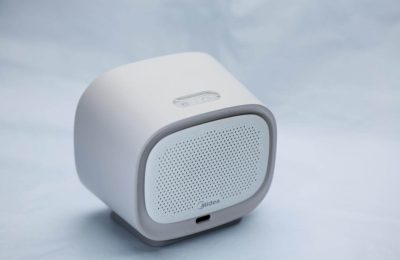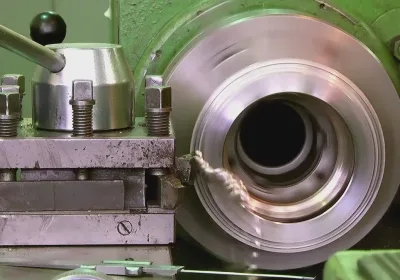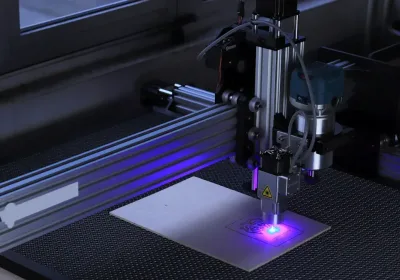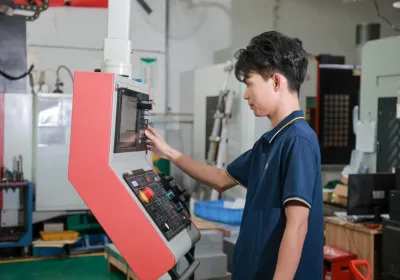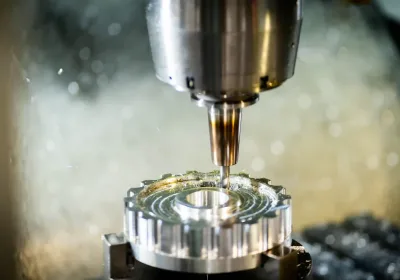
A mini milling machine lets you cut, shape, and drill small parts. It does this with great accuracy. There are different types of milling machines. Some are vertical, some are horizontal, and some are CNC. Many hobbyists and small shops like these machines. They use them for jobs that need careful work and flexibility. Mini milling machines are small and easy to use. But, they are not as strong as big machines. When picking a mini milling machine, think about its size, power, and how accurate it is. Make sure it fits your needs.
Mini milling machines are used all over the world. Hobbyists and small shops buy most of them. Millions are sold every year. The market is growing by more than 5% each year. More people want to do DIY and custom projects.
Statistic/Aspect | Details |
|---|---|
Annual Market Volume | Millions of units are sold every year |
Key User Segment | Hobbyists and small shops are the main buyers |
Projected CAGR | The market grows by more than 5% each year |
Key Takeaways
Mini milling machines come in many types.
Some types are vertical, horizontal, universal, CNC, and manual.
Each type works best for certain jobs and materials.
These machines can cut, shape, and drill small parts.
They are good for people who like hobbies, small shops, and learning.
Small milling machines do not take up much space.
They cost less money and use less electricity.
You can control them well, but they are not as strong or fast as big machines.
Pick the right mini mill by thinking about size, power, accuracy, and price.
Make sure it fits your project and workspace.
Clean your machine often and use the right tools.
This keeps your machine working well and your parts good.
Types of Milling Machines
Vertical Mini Milling Machine
Vertical milling machines have a spindle that moves up and down. You put your material on a flat table. The tool goes up and down to cut or drill. This makes it easy for small projects. You can make flat shapes, slots, and holes. These machines are very accurate. Many small shops and schools use them. They are small and easy to set up.
Tip: The Proxxon MF70 and Sherline 5400 are good for models and learning.
These machines fit in small spaces. They give you good control:
Specification | Details |
|---|---|
Dimensions (LxWxH) | |
Weight | 4,000 lbs (1800 kg) |
Table Size (WxL) | 650 x 300 mm (25.6 x 11.8") |
Axis Travel (X/Y/Z) | 500 / 300 / 400 mm (19.6 / 11.8 / 15.7") |
Positioning Accuracy | ±0.0004" per 12" |
Repeatability Accuracy | ±0.0002" |
Spindle Speed | 10,000 rpm |
Spindle Motor Power | 7.5 kW (10 Hp) |
Vertical milling machines are very popular. They hold 42.3% of the CNC milling market. Their small size and accuracy make them great for schools and small shops.
Horizontal Mini Milling Machine
Horizontal milling machines have a spindle that is sideways. The tool moves across the material. These machines use special cutters on an arbor. You can put many tools on one arbor. This lets you work on many sides at once. It saves time when making lots of parts.
Performance Aspect | Other Milling Types (e.g., Vertical) Characteristics | |
|---|---|---|
Multi-surface Machining | Can machine many sides in one setup, using special fixtures or tables. This helps finish parts faster. | Usually needs moving the part by hand for each side, which takes longer. |
Tooling | Uses cutters on an arbor for many steps in a row. Good for making lots of parts. | Uses end mills and other tools. Changing tools is quick and easy. |
Stability & Precision | Arbor support makes cuts strong and steady. Chips fall away easily. | Good for light cuts. May bend with heavy cuts. |
Setup Time & Complexity | Takes longer to set up. Needs careful clamping and alignment. | Quick and easy to set up. Good for short jobs. |
Speed & Efficiency | Fast for big jobs because you change tools less. | Fast for small jobs but slower for many sides. |
Workspace & Power | Needs more space and power. Not good for tiny parts. | Smaller and better for small, delicate parts. |
You often see horizontal machines in old shops or factories. They need more room and power than vertical ones. They are not best for small parts, but they are great for making many big parts quickly.
Universal Mini Milling Machine
Universal mini milling machines can work both ways. You can switch from vertical to horizontal easily. This helps you do many kinds of jobs, like metal, wood, or jewelry.
Universal machines are good for making samples, molds, and teaching.
You can use them for metal, plastic, or other materials.
They can use CNC and automation for better results.
Many industries use them for small, detailed parts.
You can change the setup fast for new jobs.
Universal mini milling machines are getting more popular. They save time and help you do more with one machine. This makes them a smart choice for busy shops.
CNC Mini Milling Machine
CNC milling machines use computers to move the tool. You give the machine instructions, and it follows them. This makes very accurate parts, even tiny ones. CNC mini mills can work all day and night. They can change tools by themselves and make hard shapes.
CNC machines waste less material by planning cuts well.
Automation means fewer mistakes and steady quality.
You can make parts for cars, planes, and electronics.
CNC machines use less energy than old machines.
New tech lets you watch and fix problems fast.
The CNC milling market is growing fast, almost 12% each year. More factories use robots and smart machines. Car makers need very exact parts. North America and Europe use many CNC machines.
Statistic/Trend | Value/Description |
|---|---|
Vertical CNC milling machines market share (2020) | 42.3% |
Global CNC milling machine market value (2020) | USD 13.05 billion |
Expected market value (2027) | USD 21.5 billion |
CAGR (2021-2027) | 8.7% |
Automotive sector market share (2020) | Over 35% |
Middle East & Africa CAGR (2021-2027) | 11.56% |
CNC mini milling machines help you make detailed parts again and again. You can use them even in a small shop.
Manual Mini Milling Machine
Manual mini milling machines need you to move the tool by hand. You turn wheels or levers to move the table and spindle. These machines are simple and cheap. You learn milling basics fast.
Manual machines are best for easy jobs, fixing things, and learning. You can drill, shape, and cut small parts. Many beginners start with manual machines before using CNC.
Manual mini milling machines are not as fast as CNC. But you control everything and learn how milling works. You can use them for wood, plastic, and soft metals.
Note: Desktop milling machines are often manual. They fit on a table and are great for home shops.
Mini Milling Machine Uses
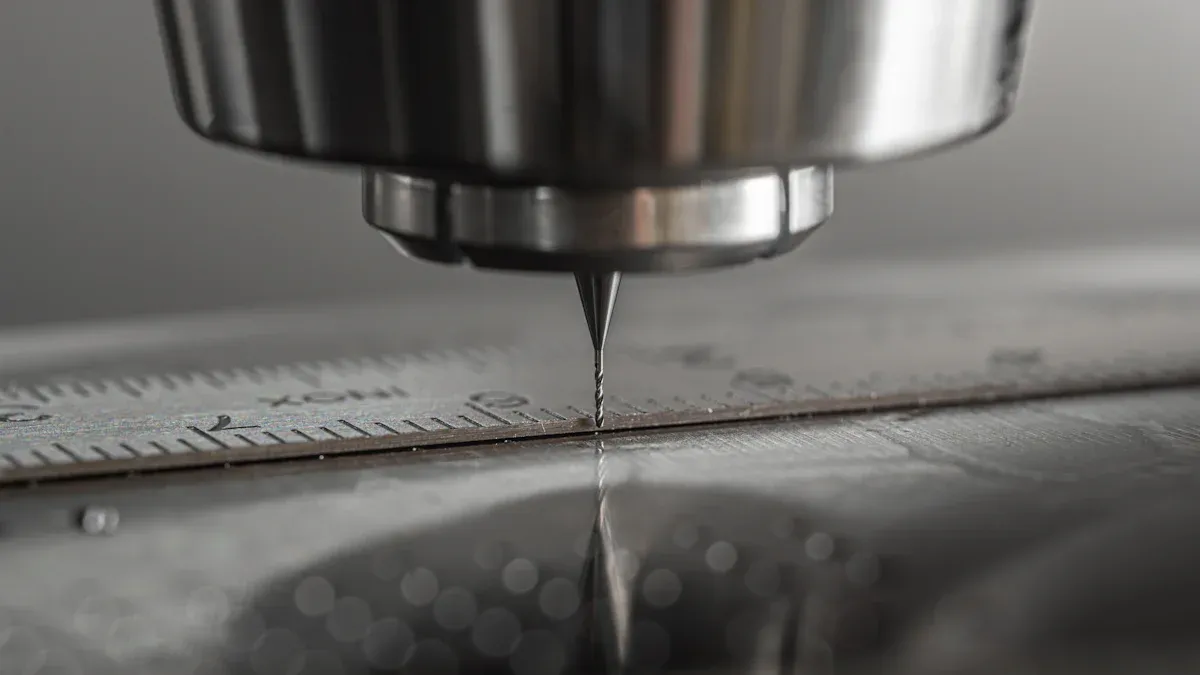
Common Operations
Milling machines help you do many jobs in your shop. You can shape, drill, and finish parts with good accuracy. Here are some things you can do:
Drill holes in metal, wood, or plastic
Make flat surfaces and slots
Smooth out rough parts
Make holes bigger or neater
Cut curves and tricky shapes
Make gears or patterns with care
Carve designs or words
New milling machines, like the QualiMill-220, let you change tools fast. This means you can work on many projects with one machine. You do not need lots of machines. Computer controls help you work faster and cut better.
The table below shows how well milling machines work:
Metric | Value | Significance / Comparison |
|---|---|---|
Throughput | Twice the throughput of older systems | |
Specific Energy Consumption | 49 kW·h/ton | 25% better than hammer mills |
Operating Cost | $0.027/kg | Lower than most commercial options |
Model Prediction Accuracy (R²) | 0.99974 | Higher than typical models |
These numbers show you can work fast and make accurate parts with a good milling machine.
Suitable Materials
You can use milling machines on many materials. These include soft metals, hard metals, plastics, and wood. Each material needs the right speed, feed, and tool for best results.
Material | Recommended Spindle Speed (RPM) | Ideal Cutting Speed (SFM) | Feed Rate (IPM) | Depth of Cut (Inches) |
|---|---|---|---|---|
Aluminum | 1000–2500 | 150–250 | 2–3 | 0.1–0.2 |
Brass | 1200–3000 | 200–300 | 1.5–2.5 | 0.1 |
Mild Steel | 500–1000 | 70–120 | 1–2 | 0.05–0.1 |
Stainless Steel | 500–1000 | 50–80 | 0.5–1.5 | 0.03–0.08 |
Plastic | N/A | 300–600 | 2–4 | 0.15–0.3 |
Use high-speed steel or carbide tools for most jobs. For aluminum and brass, use small tools. For steel, use carbide tips and take light cuts. For plastic or wood, use sharp tools and go faster for smooth parts.
Mini milling machines help you make models, hobby parts, and small products. You can make test pieces, gears, brackets, and jewelry. Most machines are accurate within 0.001 to 0.005 inches. This is good for most small projects.
Tip: Always use the right speed and tool for your material. This keeps your tools sharp and your machine working well.
Pros and Cons
Advantages of Small Milling Machine
Small milling machines have many good points. They fit in small spaces. You do not need a big area for them. You can move them if you want to change your setup. They cost less than big machines, so you save money.
Small milling machines are very accurate. You can control them well. This helps you make parts that are the same every time.
You can use these machines for many jobs. They can cut, drill, and shape. You do not need lots of different machines.
Small milling machines use less power. This saves energy. Using less electricity is better for the environment.
Many small milling machines let you change parts. You can add new things or fix them fast. This helps you do new jobs easily.
The weight of the machine keeps it steady. Steady machines shake less. This helps you make better parts.
You can make the same part many times. The parts will look the same.
Tip: Pick a small milling machine with parts you can change. It will save energy and help you work with many materials.
Limitations of Mini Milling Machine
Small milling machines also have some problems. You should know these before you buy one.
They are not as strong as big machines. It is hard to cut thick or hard stuff.
Small milling machines work slower. Big jobs take more time.
Some machines do not have a quill feed. This makes deep holes harder to drill.
You cannot make very big parts. The machine is too small for large pieces.
Some machines are not very stiff. This can make cuts less exact.
Not all machines have cool features. You might not get digital screens or tool changers.
Note: Always check what the machine can do. Make sure it fits your needs for good work.
Comparison Table
Here is a table to help you see the good and bad sides:
Feature | Advantages | Limitations |
|---|---|---|
Size | Small, fits tight spaces | Cannot make big parts |
Cost | Cheaper for most people | May need upgrades for hard jobs |
Versatility | Can cut, drill, and shape | Fewer special features |
Accuracy & Precision | Very accurate, makes parts the same | Not as strong for tough cuts |
Stability | Heavy, does not shake much | May shake with hard materials |
Efficiency | Uses less power, saves energy | Slower for big jobs |
Modularity | Easy to change parts for new jobs | Not all can change parts |
Power | Good for light and medium jobs | Not strong for heavy work |
Features | Simple controls, easy to use | Some miss quill feed or screens |
Consistency | Makes small parts the same every time | May not repeat well on hard jobs |
Think about these good and bad points before you buy. Think about what you want to make. Think about what materials you will use. If you want good accuracy and to save energy, a small milling machine is a smart pick.
Choosing a Mini Milling Machine
Size and Power
Think about size and power when you buy a mini mill. Small machines fit in tight spaces. You can move them and put them on a strong table. Power is important for cutting different things. If you want to cut steel, pick a strong motor. For wood or plastic, less power is okay. Heavy machines do not shake much. This helps you cut more exactly. Always check how much the machine weighs. Read reviews to see what people say about size and power.
Accuracy and Precision
You want your parts to be the same every time. Pick a machine that is accurate and precise. Look for machines that pass tests for accuracy. Tools like lasers and dials help check this. Some machines are tested for a long time to see if they stay accurate. Clean and check your machine often to keep it working well. There are rules, like ISO 10791, for testing accuracy. Read reviews to see what users say about accuracy. Good accuracy means you can trust your machine.
Tip: Keep your work area clean and cool. This helps your machine stay accurate for a long time.
Budget and Brand
Think about how much money you want to spend. Some machines cost $300, others cost $8,000. Famous brands cost more but are often better. The table below shows how brands and features change the price:
Brand/Company | Market Focus | Impact on Budget and Reviews |
|---|---|---|
DATRON Dynamics, Inc. | Premium, high-speed, precise | Higher price, top reviews |
Haas Automation, Inc. | Affordable, scalable CNC | Good for tight budgets, solid reviews |
YAMAZAKI MAZAK CORPORATION | Smart, automated machines | Premium price, advanced features |
FANUC CORPORATION | Robotics, automation | Higher cost, efficient operation |
Hurco & Okuma | Usability, support | Mid-high price, strong reviews |
Compare prices, features, and help after you buy. Think about what you need most. If you want special features, you may pay more. If you only need simple jobs, you can save money. Always check your budget and read reviews before you buy. Buying from a good brand gives you better help and value.
You have many options when choosing a mini milling machine. Each type offers unique features for different tasks. Think about what you want to make, your budget, and your space. Check the accuracy and power before you buy. Make a list of your needs. Ask yourself if the machine fits your long-term plans. A good choice helps you work better and learn more.
FAQ
What is the main difference between vertical and horizontal mini milling machines?
Vertical milling machines move their tool up and down. Horizontal milling machines move their tool from side to side. Each type is best for different shapes and cuts.
How do you improve accuracy and repeatability with a small milling machine?
Keep your machine clean and add oil often. Use sharp tools for better cuts. Check your settings before you start. Heavy machines shake less, so your work is more exact.
Can you use a mini milling machine for precision cutting on metal and plastic?
Yes, you can cut metal, plastic, and wood with mini mills. Pick the right tool and speed for each material. This helps you work better and faster.
What should you consider before buying a small milling machine?
Think about your budget and how much space you have. Decide what kind of milling machine you need. Read reviews and look for features like accuracy and speed.
Are desktop milling machines good for beginners?
Desktop milling machines are great for people just starting out. You can learn basic skills and set them up easily. They help you practice making small, neat parts.
 LKprototype
LKprototype

